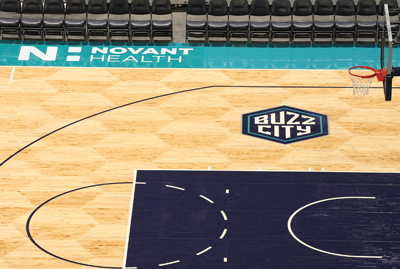NBA executives later this month will re-evaluate the revolutionary revenue-sharing plan forged three years ago and designed to spread the wealth between the league’s have and have-not franchises.
Team and league officials are scheduled to meet Oct. 20 in New York to address the effectiveness of the plan. It’s an analysis that was called for as part of the plan’s implementation in 2011, but it also comes at a time when owners are operating in an immensely prosperous period for the league and with even more revenue expected soon. Principal among that will be money from new national media contracts.
How those market forces affect teams shifting dollars among one another plays into the discussion that’s ahead.
“Once the television deal is signed, some teams that obviously are the contributors may suggest that the formula be changed to reduce the amount that big-market teams
{podcast}
SBJ Podcast:
Media writer John Ourand, NBA reporter John Lombardo and Executive Editor Abraham Madkour discuss the NBA's massive new media rights agreement announced on Oct. 6.
are contributing,” said a source with knowledge of the revenue-sharing plan.
The revenue-sharing plan was put into place in conjunction with the collective-bargaining agreement of 2011. The program, which came after much debate among owners, greatly increased the amount of revenue sharing within the league with the goal of shifting dollars from high-revenue to low-revenue franchises.
Before the plan was put into place, the NBA relied on luxury tax revenue — money collected from teams that spent beyond the salary cap — to fund a more limited amount of revenue sharing between clubs.
The plan now in place uses a different method for reallocation of dollars. All teams contribute annually a fixed percentage of their total local revenue, roughly 50 percent, minus certain expenses such as arena operating costs, into a revenue-sharing pool. That money is then divided back out among the league’s 30 clubs in such a fashion that some end up as net recipients while others are net payers.
The 2012-13 season was the first full, 82-game season for the league in which the system was implemented, after the lockout-shortened 2011-12 season. For 2012-13, teams ultimately contributed a total of $131 million to the revenue-sharing pool that along with other shared revenue pushed total revenue-shared dollars to more than $200 million.
Big-market teams contributed the most: The Los Angeles Lakers paid $45 million into the plan, followed by the New York Knicks at $23 million and the Chicago Bulls at $17 million. On the receiving end, the Charlotte Hornets took in $21 million followed by the Milwaukee Bucks at $17 million. The figures came from a source familiar with the plan and have been reported previously.
 |
Apron floor ads, as in Charlotte (above), and bigger local TV deals have boosted revenue.
Photo by: CHARLOTTE HORNETS
|
Teams have not yet received revenue-sharing checks from the 2013-14 season.
When the revenue-sharing plan was enacted, the agreement called for the NBA’s planning committee to conduct a review of the plan after the 2013-14 season to determine whether any changes should be recommended. It’s that provision that’s bringing together the executives from each of the NBA’s 30 teams and league executives Oct. 20.
At the same time, when the plan was put into place, the economics around the league were far different than they are now. Local TV deals have skyrocketed in value, and teams are selling new sponsorship inventory highlighted by apron floor advertising deals worth as much $1 million annually for some clubs. There’s also the substantial revenue expected from the forthcoming national TV deals. Those deals are expected to bring the league more than $2 billion in annual revenue, more than double the amount from the contracts now in effect, which expire after the 2015-16 season.
The question is whether that additional revenue, from both national and local sources, gives the league’s low-revenue teams the kind of support that was intended from the creation of the revenue-sharing plan, and if so, how should the plan be adjusted to account for those new economic realities.
“It’s a checkpoint to see how the process is working,” said one team executive of the Oct. 20 meeting. “It’s a very complex formula. They want to take a deep dive and make sure that it is working.”
The NBA’s planning committee, which would recommend any changes to the revenue-sharing plan, is chaired by Philadelphia 76ers owner Josh Harris.
All of the league’s owners will get an update on revenue sharing at their next scheduled board of governors meting, Oct. 21-22 in New York.




